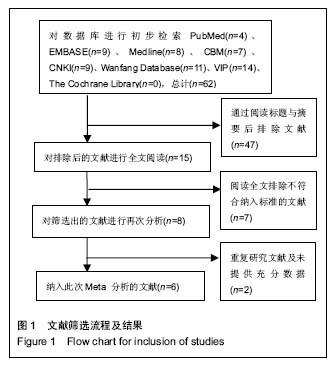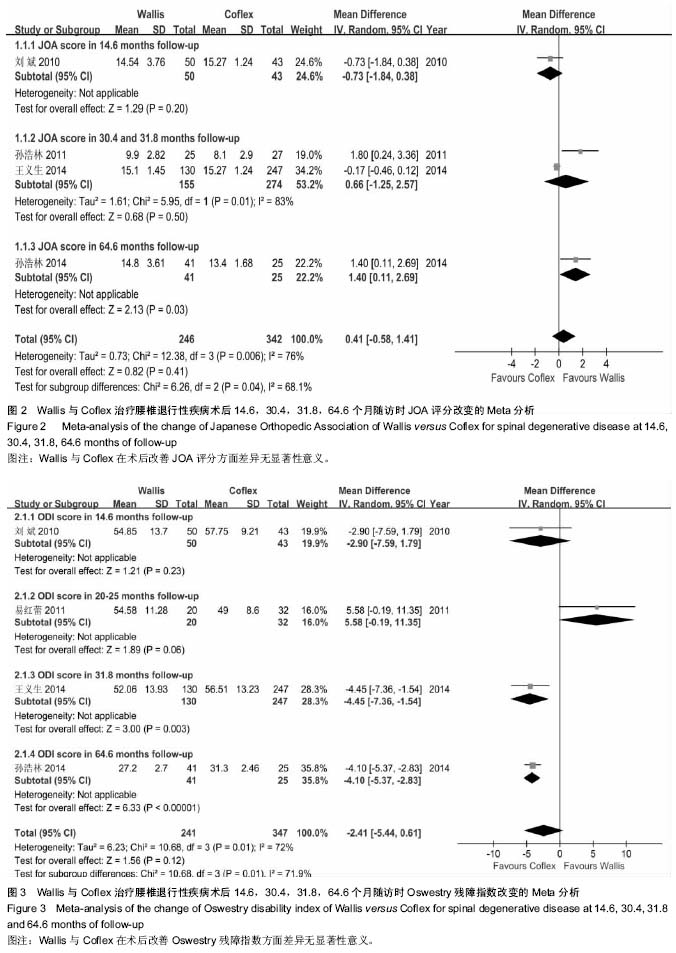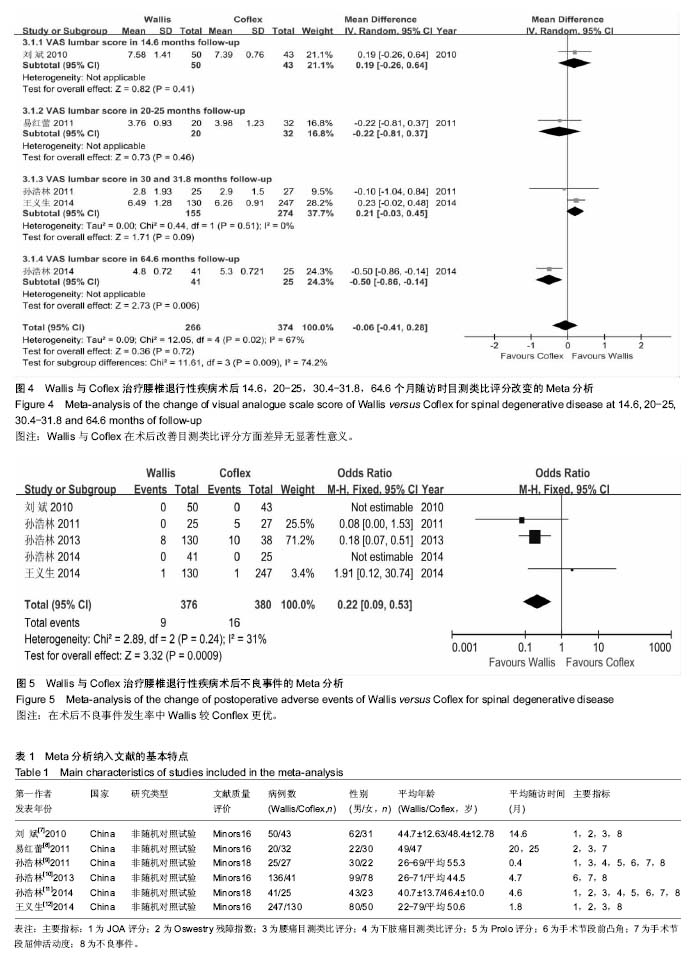中国组织工程研究 ›› 2017, Vol. 21 ›› Issue (11): 1798-1804.doi: 10.3969/j.issn.2095-4344.2017.11.027
• 骨与关节循证医学 evidence-based medicine of the bone and joint • 上一篇
Wallis与Coflex两种棘突间动态稳定系统修复腰椎退行性疾病的Meta分析
赵 赫1,俞 兴1,唐向盛2,贺 丰1,杨永栋1,熊 洋1,胡振国1,徐 林1
- 1北京中医药大学东直门医院骨科,北京市 100700; 2北京中日友好医院骨科,北京市 100029
Meta-analysis on interspinous dynamic stabilization system Wallis versus Coflex for lumbar degenerative disease
Zhao He1, Yu Xing1, Tang Xiang-sheng2, He Feng1, Yang Yong-dong1, Xiong Yang1, Hu Zhen-guo1, Xu Lin1
- 1Department of Orthopedics, Dongzhimen Hospital, Beijing University of Chinese Medicine, Beijing 100700, China; 2Department of Orthopedics, China-Japan Friendship Hospital, Beijing 100029, China
摘要:
文章快速阅读:
.jpg)
文题释义:
Wallis系统:是由Sénégas等经过长达20余年的设计改进而制成一种腰椎棘突间内固定器。其第1代系统于1986年研制成功,是由2条粗绦纶编织成的束带固定于1个由钛合金制成的间隔器上构成的装置,可置于单个棘突节段或多个节段。第2代系统被正式命名为Wallis系统,2007年8月首次进入国内。其与第l代系统主要区别在于其间隔物的材料换成了聚醚醚酮,其弹性模量与腰椎后方结构更加匹配,可限制腰椎后伸.并承载椎间盘及小关节突的压力。
Coflex系统:是由Paradigm公司开发的一种腰椎棘突间内固定器,为钛合金材料,其中部为一U型结构,具有弹性功能,植入棘突间。使固定节段脊柱在矢状位上有50°-100°的屈伸活动范围,维持脊柱的生理活动。上、下各有两个尾翼,用于固定在棘突上,每个尾翼各有一个孔,可供缝合加强固定。在其生物力学作用上,Coflex系统除具有上述棘突间内固定器的作用外,它在增强脊柱稳定性方面的作用更加完善,并且由于其植入节段旋转中心靠近椎管的特点,增加了旋转的稳定性。
中国组织工程研究杂志出版内容重点:人工关节;骨植入物;脊柱;骨折;内固定;数字化骨科;组织工程
ORCID: 0000-0003-3598-3492(俞兴)
中图分类号:




.jpg)